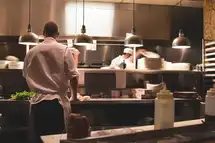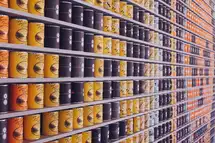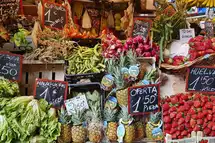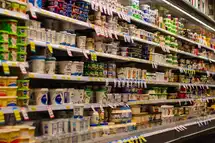What is Food Waste?
Food waste is defined as any food that is lost or discarded before it can be eaten. This includes uneaten food from plate waste, as well as food that is spoiled or otherwise not fit for human consumption.
5 Simple and Effective Ideas to Help Restaurants Minimize Food Waste
Just How Much Food is Wasted?
It is a well-established fact that while there is an acute crisis of food shortage in some parts of the world, in others, there is a growing problem of food wastage where billions of tons of food get discarded every year. Apart from the existing global food crisis, an estimated 35 million Americans suffered from food insecurity even before the Covid-19 pandemic. The number is expected to rise further to 50 million in 2022, with more unemployment and rising inflation.
According to the Environmental Protection Agency (EPA), 1.4 billion tons of food are wasted globally every year. Americans are responsible for a large share of this burden, wasting 40 million tons of food every year. This boils down to an average of 219 pounds of wasted food per person. While most of this burden lies on consumers, restaurants and food service establishments are to be equally blamed for this growing crisis. More than 80% of the U.S. population ends up discarding food that is perfectly fine to eat, because they misinterpret food labels and expiration dates, says Feeding America, a non-profit organization.
Impact of Wasted Food
Apart from the food supply imbalance, wastage also has a deep environmental impact that is aggravating the pressing crisis of climate change. Food wastage causes irreversible environmental damage, consequences of which reverberate across generations. Here's a glimpse of it-
- World Wide Fund (WWF) data says food preparation uses up a lot of the limited natural resources of fresh water and energy that goes on to generate greenhouse gases like methane and carbon dioxide. These gases make up 11% of total global emissions, which makes food wastage a significant contributor to the problem.
- Food is the single-largest component that makes up the mass of U.S. landfills. It contributes to 22% of the municipal solid waste in the country, says the EPA. When food items are added to already decaying landfills, they produce more harmful pollutants such as nitrogen and algae blooms.
- WWF says the production of wasted food in this country produces the same quantity of greenhouse emissions as 37 million cars.
- Speaking of the financial impact food wastage has on the U.S. economy, Feeding America says citizens are throwing out $218 billion every year, with dairy products being the most discarded among all food items. On average, a typical American family of four wastes $1,600 a year through wasteful practices.
You're fed up with the amount of food wasted at your restaurant every day.
You want to do something about it, but don't know what.
Ways to Minimize Food Waste- No. 1 Track it
As a restaurant or foodservice business, you'll have large volumes of sales and inventory data that show you patterns of demand, supply and wastage. You can use these data sets to keep track of how much you are producing, how much you are selling, and how much is being wasted. Preparing a separate data sheet to keep track of the food waste may help you scale back production of excess food items from the menu that remain unutilized.
You can try different measuressuch as introducing smaller portions of menu items that witness the maximum food wastage, and making adjustments to the menu, such as offering different portion sizes for different appetite levels. After you implement these changes, go back to your food waste data sheets to see if the moves helped reduce wastage. If they have, you can continue with the changes or make more adjustments to further reduce wastage. If they haven't, you may have to revisit the changes and take external help from experts and environmentalists who can guide you better.
No. 2- Practice Order Forecasting for Waste Reduction
If you have been running an established business for some time, you'll know when to expect high sales and when to scale down on operations because footfalls will drop. If you have been using these forecasting tactics to schedule your staff movement and supply chain orders, why not use the same methods to reduce food wastage and Food Costs? Use the sales order forecasting software system to accurately predict customer demand. This will prevent you from preparing excess food in anticipation of a heavy footfallwhen there won't be anyand ultimately suffer wastage and losses.
A better understanding of your demand and supply will give you better control over your restaurant's operations and leave you with more money in your cash counter.
No. 3- Train Your Staff on Waste Reduction
Reducing food wastage at a business establishment cannot only fall upon the owner or manager, but the entire staff, right from the servers to kitchen assistants and chefs. The entire workforce has to work in tandem to reduce wastage, as food handlers are the primary workers who handle a restaurant's resources and manage its production processes. Train your staff in such a way that they develop a reflexive approach to waste reduction with each of the handling processes they carry out every day.
Food handlers, being primary touch-points, often come up with innovative solutions to reduce food wastage. From the kitchen staff to front-of-house workers, try to involve everyone in controlling wastage. When you ask the staff for suggestions, you may find new ways of dealing with the problem of waste and may even succeed in reducing the operational costs incurred in the preparation of excess food.
There are several ways to cut down food waste at your restaurant.
This article rounds up the five most effective methods.
No. 4- How to Handle Excess and Reduce Food Losses
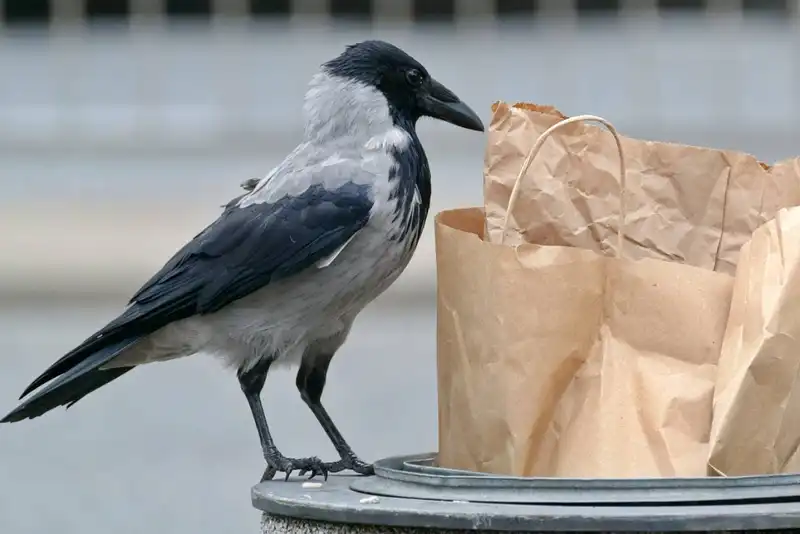
Keep an eye out for overproduction. Avoid using batch preparation methods and shift to preparing food on a cook-to-order basis instead. This will help you keep a check on extra quantities of food produced.
However, no matter how hard you try, you may still end up with trays full of excess food on some days. Plan in advance for these days and figure out how to handle the extra food, or you may end up tipping your trays into the bin. You could consider using some of the cooked food for other recipes. Leftover chicken, for example, could be upcycled into a special lunch menu item. You could also donate cooked food to charitable organizations and soup kitchens.
No. 5- Composting to Reduce Food Losses
Quick-service and full-service restaurants are often left with food scraps that are not fit for reuse, but should not be tossed into the bin either. Skins of fruits and vegetables or leftover fibre from juices, leaves and stems, etc. are often found in huge quantities in the kitchens of high-function businesses. These can be rehabilitated as compost that act as natural fertilizers to enrich the soil. You can prepare compost and use it to improve your kitchen garden or even start selling the rich fertilizer to home chefs and gardening enthusiasts who are always in need of good compost.
Final Word
According to the World Wide Fund for Nature, the restaurant industry bears an estimated expense of $162 billion every year due to food wastage and related issues. But thankfully, some restaurant businesses and large enterprises are taking note of the problem, and adopting significant measures to reduce their share of wastage. The EPA has developed a tiered system called Food Recovery Hierarchy that prioritizes the prevention of food wastage and diversion to reduce the same.
The inverted pyramid approach of the hierarchy system considers the first and most notorious source from where the process of wastage starts. The pyramid ends with the last stages of the wastage cycle, such as landfills and solid waste dumps. The six stages of the pyramid are source reduction, feeding hungry people, feeding animals, industrial uses, composting and landfills.
Source reduction is the principle of buying only what is needed and producing smaller quantities of food. The next stage is using the excess food to feed those in need, such as homeless people or stray animals. Excess food can also be recycled for industrial uses, such as producing biofuel and other bio-products. Restaurants can tie up with such factories and plants to transfer their excess produce.
Every step, small or big, counts when it concerns a crisis of this scale. While consumers need to do their part as the largest contributors to food wastage, foodservice operators have to do their bit too. Because Restaurant Sustainability will remain a pipe dream if a new approach to food production and utilization is not developed at the earliest.
You want to lower your food costs.
An easy way to do it is to reduce your food waste. Here's how to do it.

































